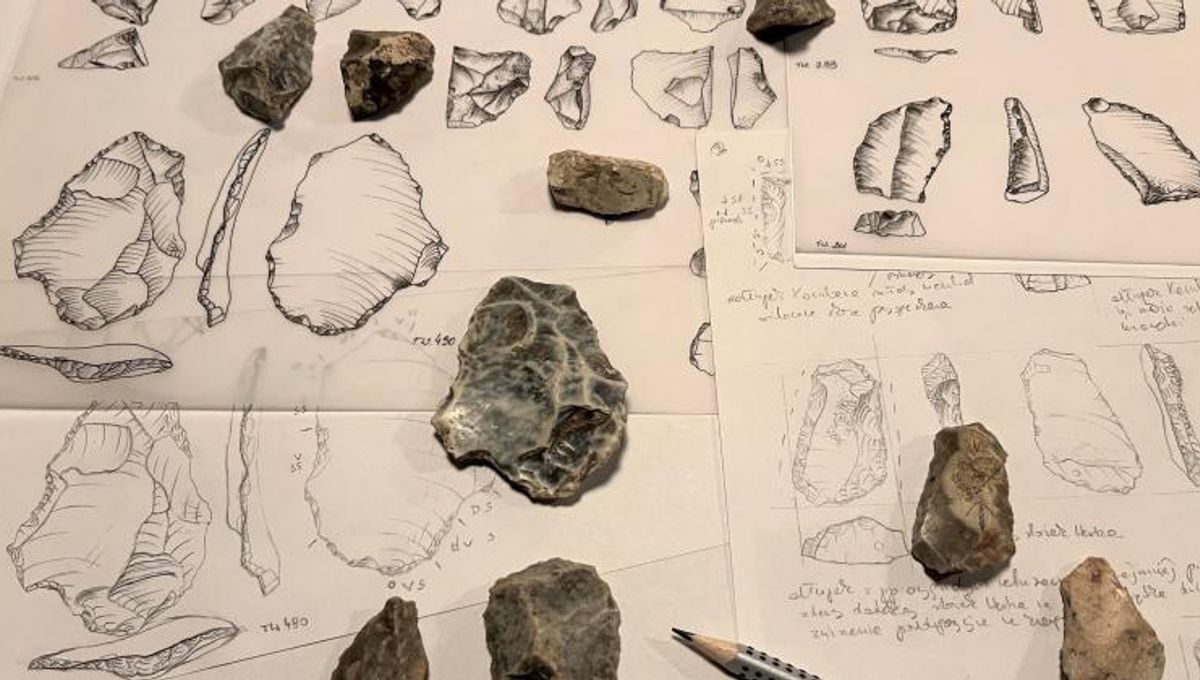
Stone tools created half a million years in what is now Poland were probably the work of an extinct hominid species called Homo heidelbergensis, thought to be the last common ancestor of Neanderthals and modern humans. Previously, researchers were unsure if humans had made it to central Europe by this point in history, so the new discovery may shed new light on the chronology of our expansion across the region.
“Peopling of Central Europe by Middle Pleistocene hominids is highly debatable, mainly due to the relatively harsh climatic and environmental conditions that require cultural and anatomical adjustments,” explain the authors of a new study on the artifacts. In particular, they note that evidence of human occupation north of the Carpathian Mountains during this period is extremely scarce, primarily thanks to the difficulty that ancient hominids would have faced when attempting to cross the range.
The tools that may reshape this narrative were found in the Tunel Wielki cave, just north of Kraków. First excavated in the 1960s, the cave contains traces of human occupation that were originally thought to be no more than 40,000 years old.
However, after noting that some of the animal remains within the cave appeared to be hundreds of thousands of years old, archaeologists decided to return to the site in 2018. Digging deeper into the soil than previous excavations had gone, the researchers found layers of sediment that contained the bones of animals that lived between 450,000 and 550,000 years ago.
Among these were several large extinct carnivores, including the “the immense Lycaon lycaonoides” – a large species of wild dog that disappeared from central Europe around 400,000 years ago. Other fearsome ancient predators such as the Eurasian jaguar, the Mosbach wolf, and a type of cave bear called Ursus deningeri were all found to have occupied the cavern during this era too.
Most interestingly, however, the researchers uncovered 40 flint artifacts within the same layer of sediment, indicating that these tools were produced during this same period in history. Their age, therefore, suggests that they were probably made by H. heidelbergensis, which occupied other sites across Europe at this time.
However, while other nearby human occupation sites from the time were open-air settlements, this is the first to be located within a cave.
“We were surprised that half a million years ago people in this area stayed in caves, because those were not the best places to camp,” explained study author Małgorzata Kot in a statement. “Moisture and low temperature would discourage that. On the other hand, a cave is a natural shelter. It is a closed space that gives a sense of security. We found traces that may indicate that the people who stayed there used fire, which probably helped tame these dark and moist places.”
While these findings imply that humans had indeed penetrated the Carpathians by about 500,000 years ago, Kot said that they probably wouldn’t have been able to survive at higher latitudes than Tunel Wielki. “It is rather unlikely that they went farther north,” she explained. “We are probably on the northern limit of their survival.”
The researchers now hope to confirm their assumptions by finding H. heidelbergensis bones at the Tunel Wielki site. Unfortunately, they have as yet been unable to identify the hominid remains within the cave because the genetic material they contain has not survived.
The study was published in the journal Scientific Reports.
Source Link: 500,000-Year-Old Tools In Polish Cave May Have Belonged To Extinct Hominid Species